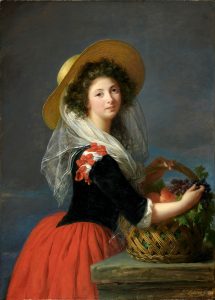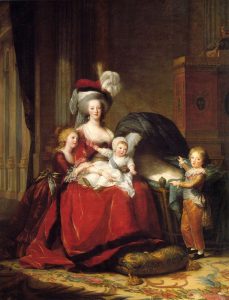20.09.2018
Today the name of Elizabeth Vige-Lebrun was heard by few, although after Rubens in the history of painting there was no more prolific artist than she.
Vizhe-Lebrun wrote more than 600 portraits of kings, queens and other influential personalities of the late eighteenth and early nineteenth centuries. The artist died at the age of 86 years. We can say that, in fact, Elizabeth Vigee-Lebrun was self-taught, she received the first lessons of painting from her father, and, having grown up, enjoyed the advice of Joseph Vernet and Jean-Baptiste Greuze. She gained popularity as a portraitist at the age of 15 – then Vigee-Lebrun earned enough to help her family financially, which was left without funds after the sudden death of the head of the family. The artist was able to professionally present their work, as well as flatter their customers, doing slightly theatrical portraits. When it came time to choose a life partner, Elizabeth decided to give preference to a marriage with the art dealer Jean-Baptiste Pierre Lebrun. It was thanks to the connections of her husband that she managed to get into a higher social and to have a friendship with all the titled ladies of France.
Certainly, the decisive role was played by the patronage of Queen Marie Antoinette. The 23-year-old artist painted a portrait of the queen in Versailles and quickly found a common language with the monarchy. So, in 1778, Vigee-Lebrun completed work on the earliest portrait of Marie Antoinette in a court dress. A couple of years later, the artist created a second important picture in her career, which was called “Maria Antoinette with children.”
The influence of a talented artist has grown both in secular life and in a professional environment. Under pressure from the royal family in 1783, Vigee-Lebrun was admitted to the French Academy of Painting and Sculpture. It is worth noting that for the 150-year history of the institution of its 550 members only 14 were women. This news was not very entertaining academics, because now the artist had the opportunity to officially sell their works to the Palace of Versailles than the woman strongly pressed many of the competing portraitists. Most resolutely acted artist Adelaide Label-Zhiar, who spread gossip about the novel by Elizabeth with Count Calonne. Such rumors led to his resignation and the spoiled reputation of Vigee-Lebrun. Having earned enough money for a carefree life, in her early years the artist lived alone. Later, other heroes began to appear on the stage, and our heroine of the eighteenth century remembered the world of art only many years after her death.
Source: http://art-news.com.ua/elizabet-vizhe-lebren-lyubimaya-xudozhnica-korolej-14356.html
© Art News Ukraine. Under the guidance of Sotheby’s.

